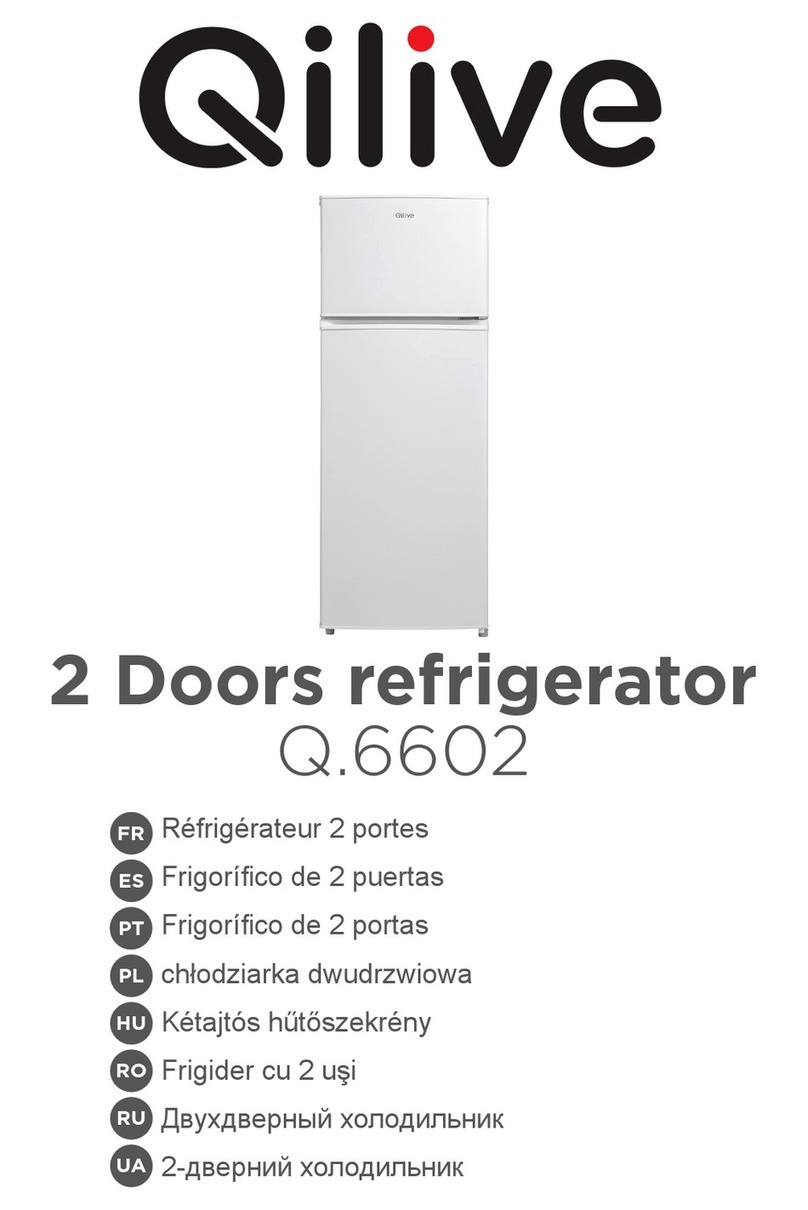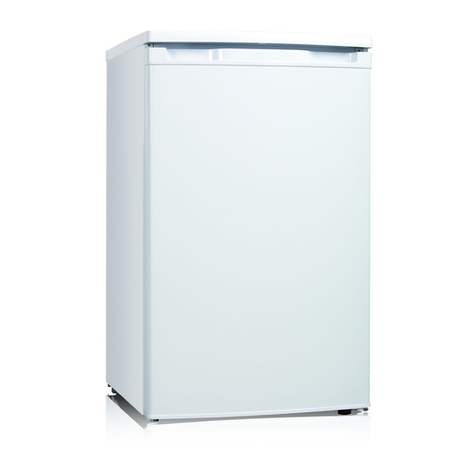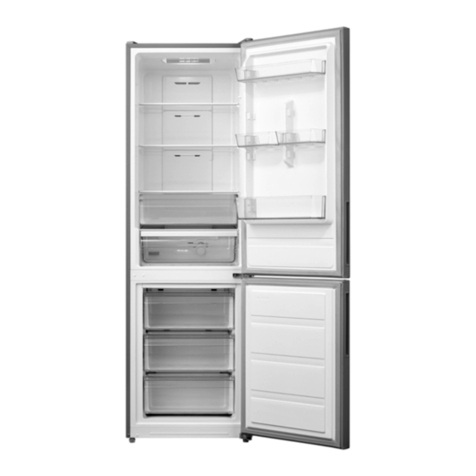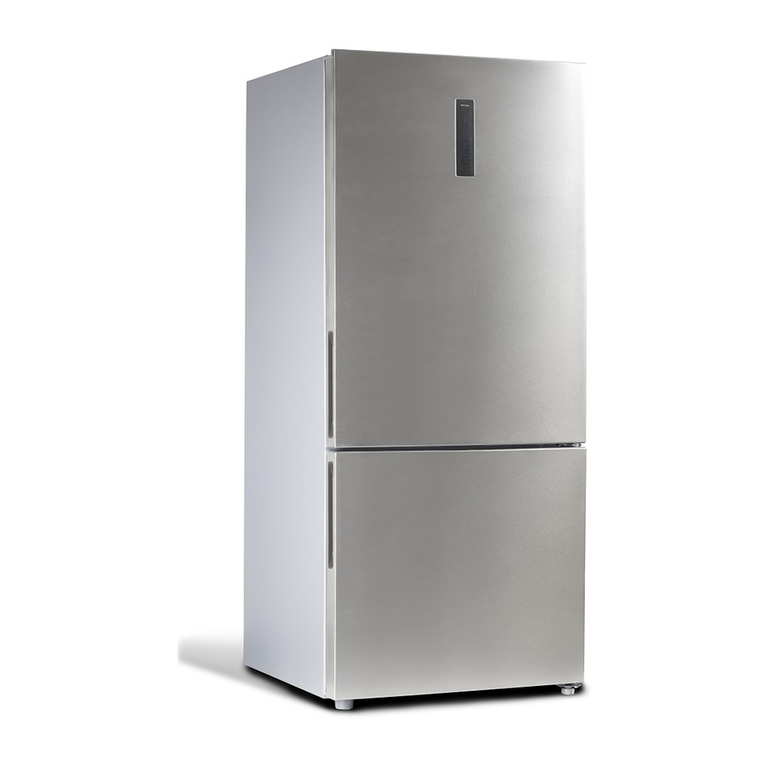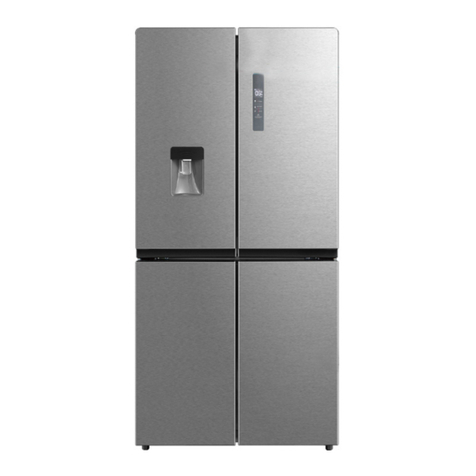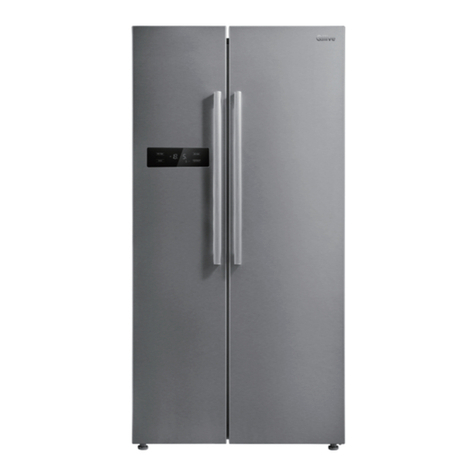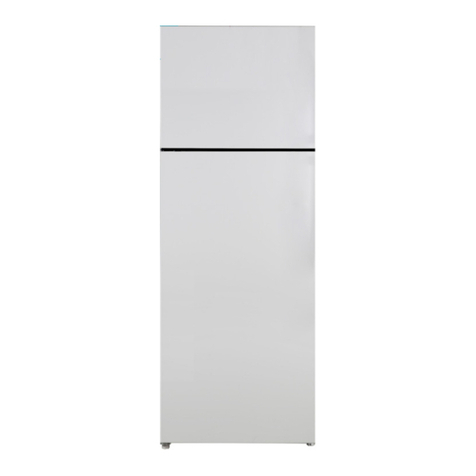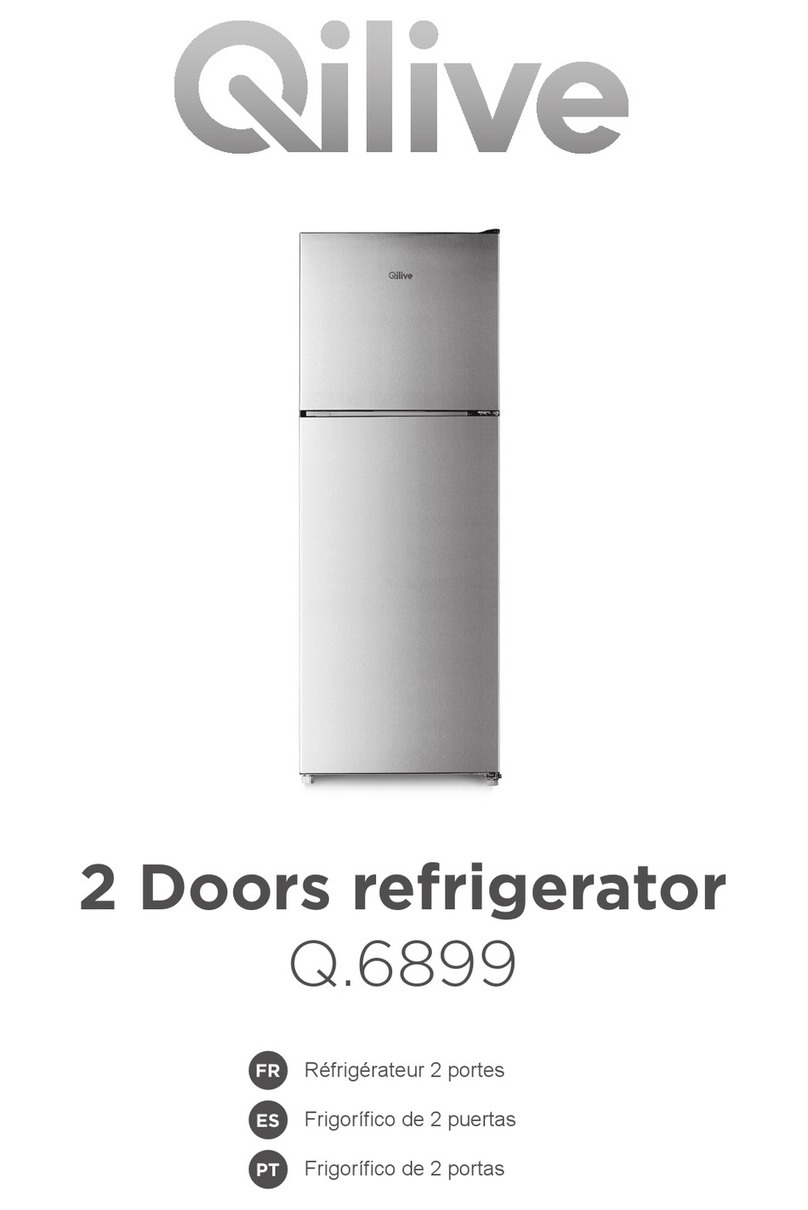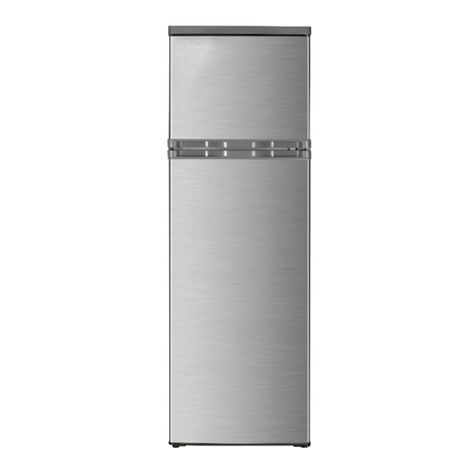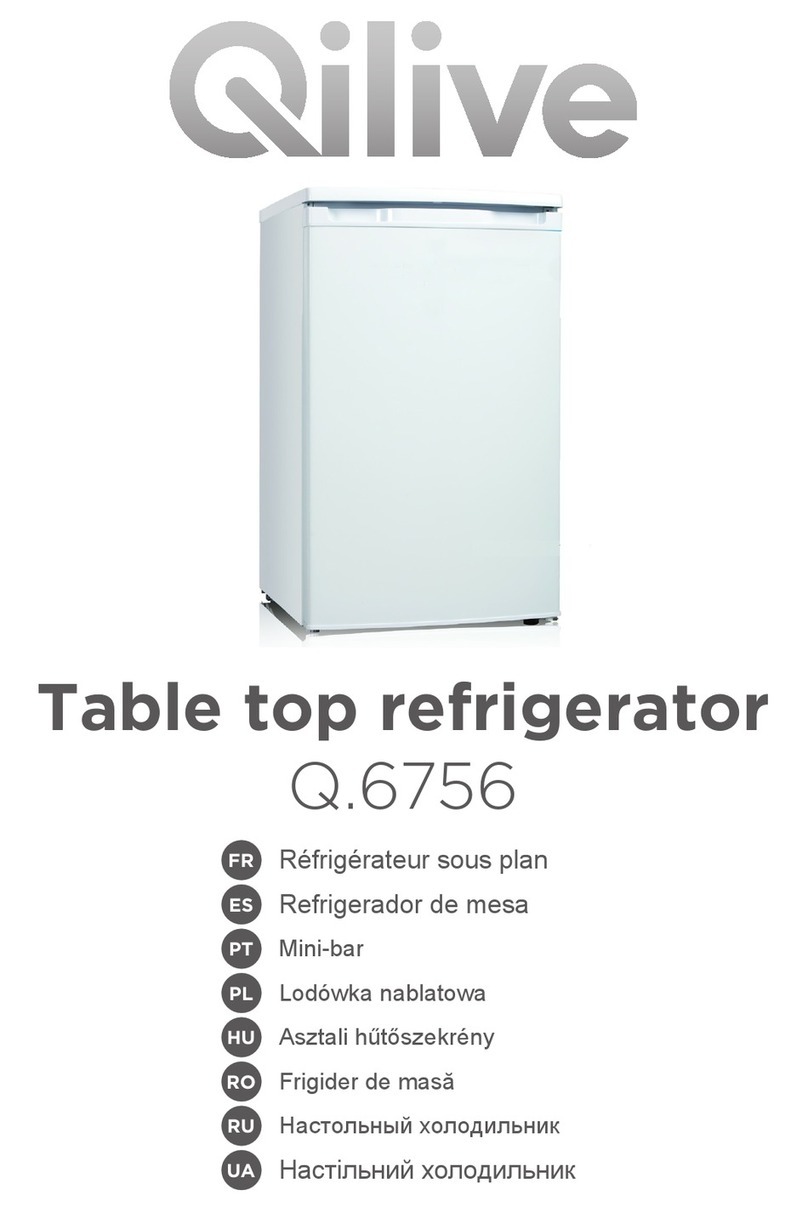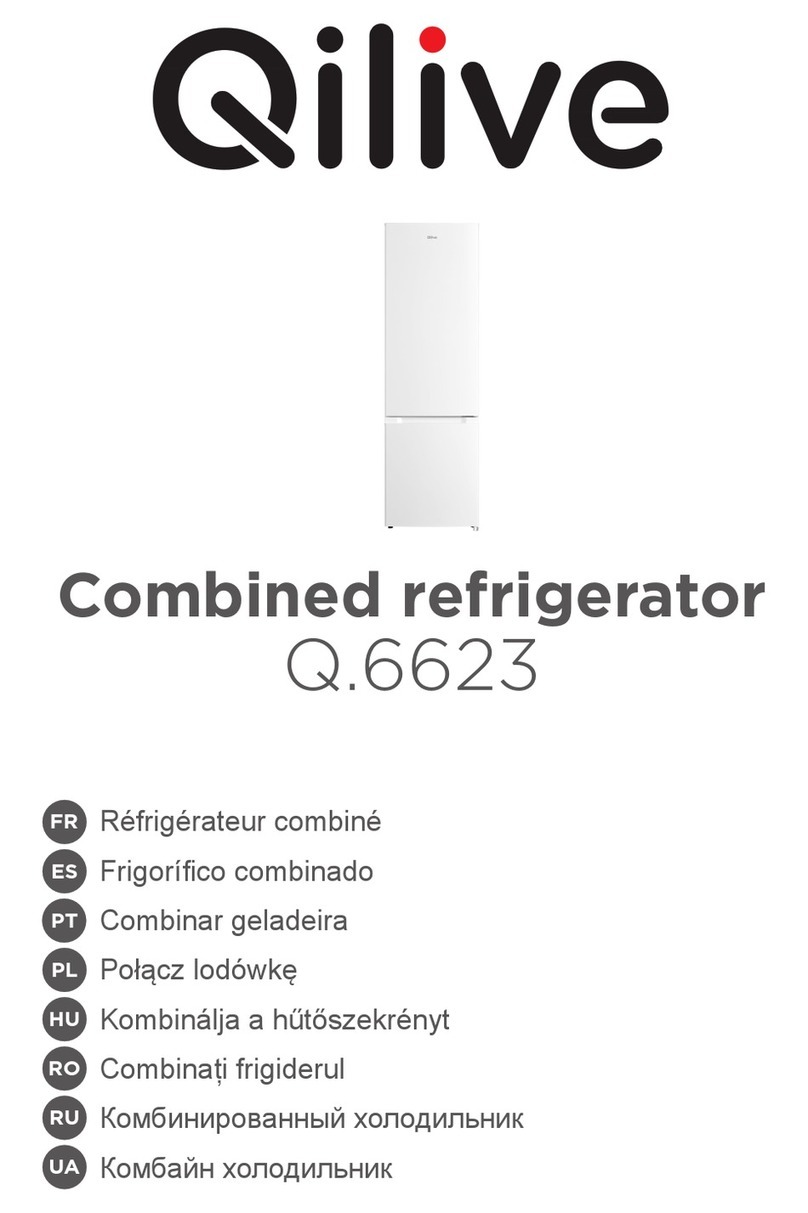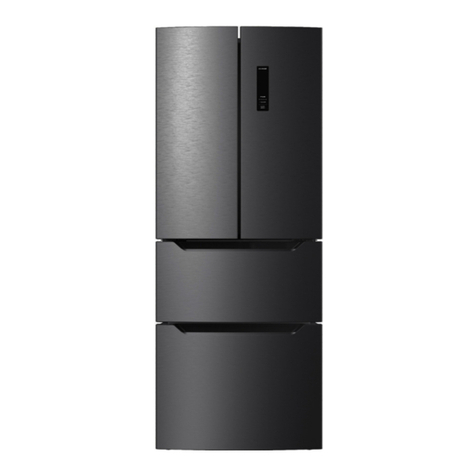
7
Reverse door
Ensure the appliance is unplugged and empty. To take the door off, it is necessary to tilt
the appliance backwards. You should rest the appliance on something solid so that it will
not slip during the door reversing process. All parts removed must be saved to do the
reinstallation of the door. Do not lay the appliance at as this may damage the coolant
system. It is better that 2 people handle the appliance during assembly.
1. Screw off the hinge cover screw, remove the hinge cover, and insert the communication
wire into the hole on the cabinet top ( Fig. 1).
2. Remove the 4 screws of the upper hinge, remove the hinge, and pry up the door
bushing and small end cap cover on the door ( Fig. 2).
3. Insert the door bushing and door communication wire into the hole on the door, and
then put on the small end cap cover ( Fig. 3).
4. Screw off the 2 screws as shown to remove the hole cover on the cabinet top, get the
cabinet communication wire out of the hole, pry up the small end cap cover on the
door, and get out the door bush and door communication wire ( Fig. 4).
5. Insert the door bush into the round hole on the door, and put on the small end cap
cover ( Fig. 5).
6. Move the refrigerator door upward by over 50mm to remove the door ( Fig. 6).
7. Screw off the 3 screws of the middle hinge cover, and then remove the middle hinge
( Fig. 7).
8. Move the freezer door upward by over 50mm to remove the door ( Fig. 8).
9. Remove the adjustable front feet under the lower hinge, and screw off the 4 screws
of the lower hinge to disassemble the lower hinge ( Fig. 9).
10. The door disassembly is nished ( Fig. 10).
11. Assemble the door and lower hinge accessories correspondingly on the opposite
side. Take the door bushing out as shown, and assemble it in the corresponding
position on the opposite side ( Fig. 11).
12. Screw off the screws of the stopper as shown, and assemble them to the other side
of the door ( Fig. 12).
13. Remove the axle and two stoppers on the lower hinge, and assemble them to the
position as shown ( Fig. 13).
14. Assemble the refrigerator and freezer doors to the opposite side. Remove the
adjustable front foot as shown by hand, assemble the lower hinge at the other side of
the cabinet, and x the screws ( Fig. 14).
15. Assemble the shorter adjustable front foot at the lower hinge side, and adjust the
height of the foot to level the refrigerator ( Fig. 15).
16. Install the freezer door, turn the middle hinge by 180°, assemble it on the other side
of the cabinet, and screw up the 3 screws to x the middle hinge ( Fig. 16).
17. Install the refrigerator door, assemble the left upper hinge at the other side of the
cabinet, and use a tool to screw up the 4 screws to x the upper hinge. Then, connect
the door communication wire and the cabinet communication wire, install the left
upper hinge cover, and x it using a screw. Assemble the whole cover at the other
side of the cabinet, and screw up the whole cover ( Fig. 17).
18. The doors are now left-hinged ( Fig. 18).
NOTE: If you want to have the door swing reversed, we recommend you to contact a
qualied technician. You should only try to reverse the door yourself if you believe that
you are qualied to do so.
All parts removed must be saved to do the reinstallation of the door. You should rest the
fridge freezer on something solid so that it will not slip during the door change process.
Do not lay the fridge freezer at as this may damage the coolant system. Ensure the
fridge-freezer is unplugged and empty. We recommend that 2 people handle the fridge-
freezer during assembly
